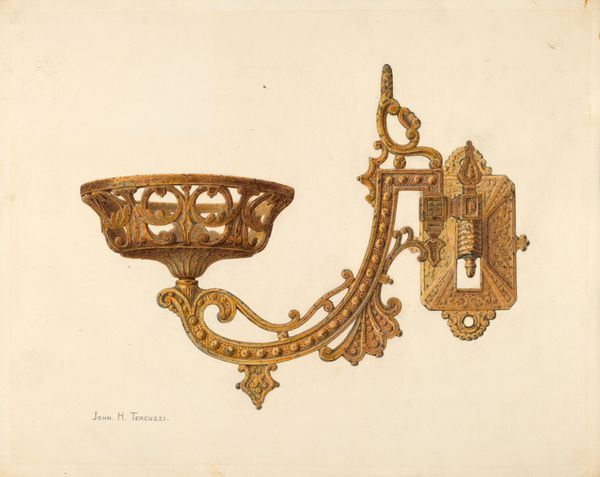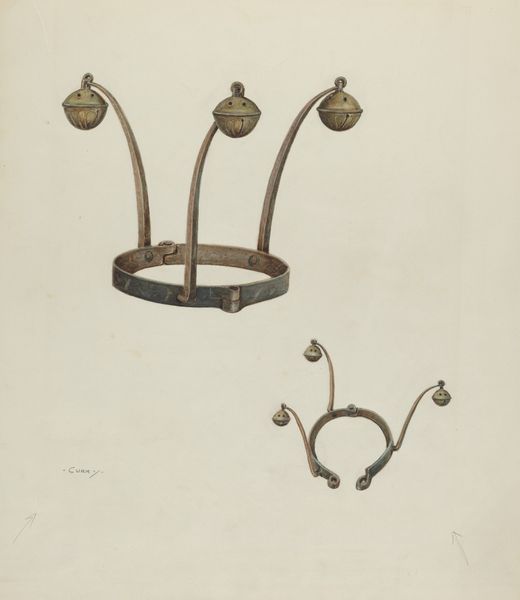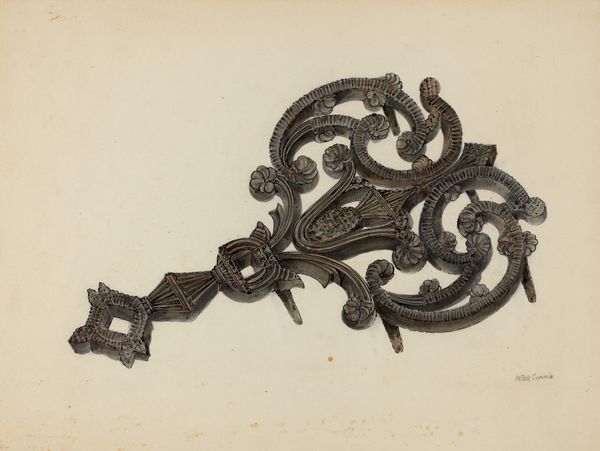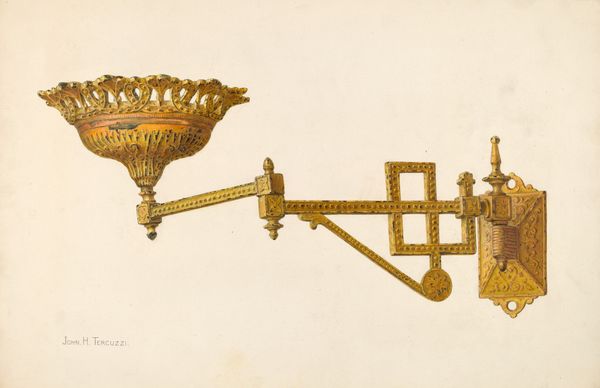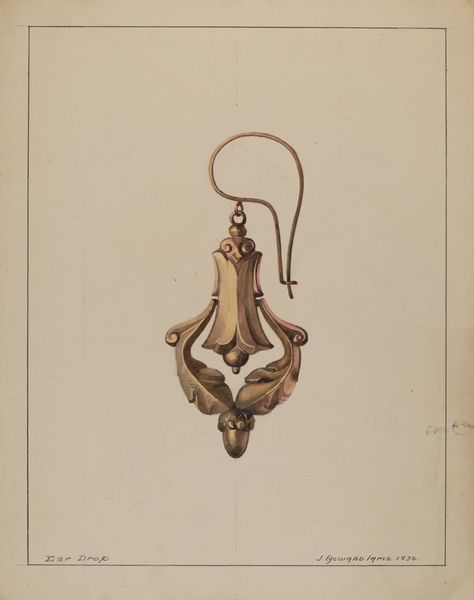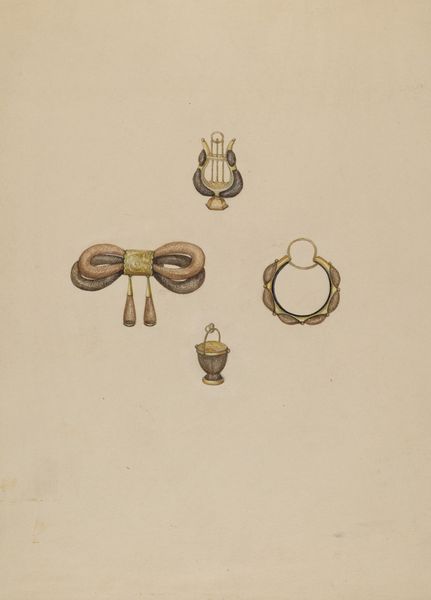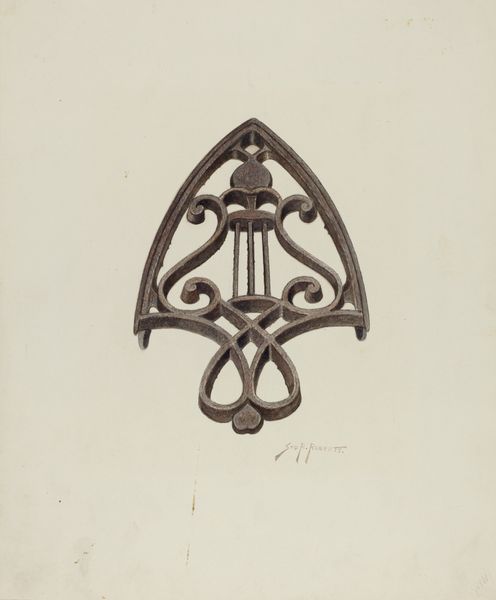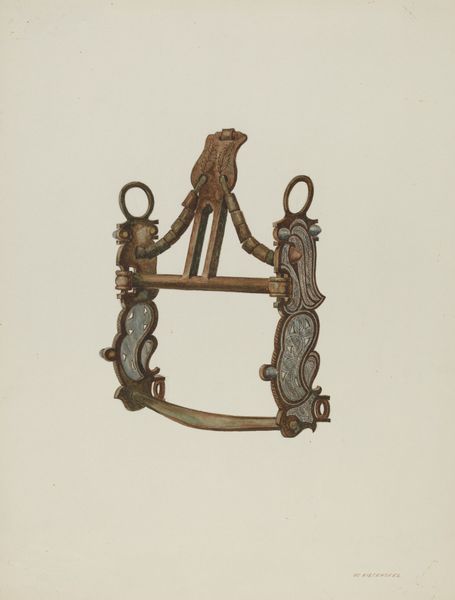
drawing, coloured-pencil, ceramic, watercolor
#
drawing
#
coloured-pencil
#
ceramic
#
watercolor
#
coloured pencil
#
ceramic
#
watercolour illustration
Dimensions: overall: 28.3 x 36.2 cm (11 1/8 x 14 1/4 in.) Original IAD Object: 11 1/2" long; basket: 6" in diameter
Copyright: National Gallery of Art: CC0 1.0
Curator: The John H. Tercuzzi drawing we’re looking at today is called "Swinging Lamp Bracket," created around 1940, employing watercolour and coloured pencil, with touches that suggest ceramic elements. It's remarkably delicate. Editor: Indeed. At first glance, I’m drawn to its materiality. The interplay of watercolour washes and the precision of coloured pencil gives the metallic subject a remarkable textural presence, evoking a real sense of depth, especially around where it seems to attach to the wall. Curator: Absolutely. It invites us to consider the object not just as an isolated aesthetic piece but within the context of design history, particularly as lighting became increasingly democratized and accessible. We see the influence of streamlined aesthetics meeting pre-war aspirations for comfort and domesticity. It asks the question, what are people buying and putting into their homes during the 1940s? Editor: I agree. And this drawing's formal composition, almost symmetrical save for that graceful curve extending from the bracket, really heightens that sense of function, design, and industrial structure, a design of balance and purpose. Curator: The heart shapes in the lamp shade itself may appear ornamental, but they also subtly reference the feminine sphere and labor, echoing gender roles prevalent during this period. Furthermore, electric light in the 1940s becomes very symbolic; access to illumination signified a move towards modernity, prosperity, and social elevation, impacting everyday life for women who used lighting to do house work, needle point, or cook. Editor: Fascinating! For me, the success of this artwork is the layering, though. You've got the hard lines defining the bracket itself, counterpointed by softer applications elsewhere... the visual vocabulary creates an intriguing contrast. Curator: It becomes a poignant emblem, a beacon – quite literally – embodying cultural shifts and socio-economic mobility that shaped mid-century society. It urges us to reflect upon progress, gender, class, labor, domestic space and even questions of sustainable design then and now. Editor: Well, for me, focusing on the formal aspects today—especially that line quality and interplay of mediums—helped to spotlight elements easily overlooked, giving me a new perspective on this humble but beautiful "Swinging Lamp Bracket." Curator: Yes, considering "Swinging Lamp Bracket" within its historical and social context enriches our viewing experience and connects it to broader conversations about modernity, societal progress and power during the era.
Comments
No comments
Be the first to comment and join the conversation on the ultimate creative platform.
